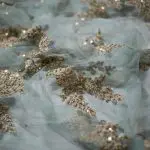Tired of feeling like your favorite clothes are one wash away from falling apart? Tear Mender Fabric Adhesive might just be the game-changer you've been searching for. This incredible adhesive is designed to tackle rips and tears with ease, giving your garments a new lease on life. From delicate lace to sturdy denim, Tear Mender has proven its mettle across a wide range of fabrics.
In this guide, we'll explore the ins and outs of Tear Mender, from its application to its pros and cons, so you can decide if it's the ultimate solution you've been seeking.
So, let's dive in and discover if Tear Mender is the key to effortlessly repairing your beloved items.
Key Takeaways
- Tear Mender Fabric Adhesive is a quick, durable, and reliable solution for fabric repairs.
- It effectively bonds various types of fabric and provides a long-term solution to tears and rips.
- Tear Mender is a cost-effective option compared to purchasing new clothing or fabric items.
- It is a versatile adhesive that can be used for repairing various fabrics and materials, including upholstery and outdoor gear.
The Benefits of Tear Mender Fabric Adhesive
When using Tear Mender Fabric Adhesive, you can experience the benefits of quick, durable, and reliable fabric repairs.
The advantages of Tear Mender are evident in its effectiveness in bonding various types of fabric, making it an ideal choice for a wide range of repair needs.
Its durability ensures that the repaired fabric remains intact even after prolonged use, providing a long-term solution to tears and rips.
The cost efficiency of Tear Mender is another notable benefit, as a little goes a long way, and you won't need frequent reapplications. This makes it a cost-effective option compared to constantly purchasing new clothing or fabric items.
The effectiveness of Tear Mender in seamlessly repairing fabric tears and the cost efficiency it offers make it a superior choice for anyone seeking a reliable fabric adhesive.
Whether you're dealing with clothing, upholstery, or any other fabric item, Tear Mender's durability and quick, efficient repairs make it a compelling choice for all your fabric adhesive needs.
How Tear Mender Works
To understand how Tear Mender works, applying the adhesive involves a straightforward process that effectively bonds various types of fabric. When using Tear Mender, start by cleaning the area around the tear or rip to ensure that it's free from any dust, dirt, or other debris.
Next, apply a thin layer of Tear Mender to both sides of the fabric that needs to be bonded. Press the two sides together firmly and hold them in place for a few seconds to allow the adhesive to set. It's important to let the bonded fabric sit undisturbed for at least 3 minutes to ensure a strong and durable bond.
If you encounter any issues during the process, there are troubleshooting techniques that can be helpful. For instance, if the fabric is particularly thick or if the tear is in an area that experiences a lot of movement, you may need to apply additional layers of Tear Mender to reinforce the bond.
Additionally, if the tear is in a hard-to-reach area, using a toothpick or small brush can aid in applying the adhesive precisely.
Applications of Tear Mender
You can use Tear Mender to effectively repair rips and tears in a variety of fabrics and materials, such as denim and leather.
When it comes to upholstery, Tear Mender offers a convenient solution for repairing tears and small holes in fabric, making it ideal for fixing couches, chairs, and car seats. The adhesive's flexibility ensures that the repaired area remains comfortable and doesn't stiffen over time.
For outdoor gear, Tear Mender is a versatile option for fixing tears in tents, backpacks, and even outdoor clothing. Its waterproof properties make it suitable for outdoor applications, providing a reliable and durable bond that can withstand various weather conditions.
Additionally, Tear Mender is an excellent choice for repairing camping equipment, including sleeping bags and tarps, allowing you to restore the integrity of your gear without compromising its performance.
With Tear Mender, you can confidently repair a wide range of items, from household fabrics to outdoor gear, with a simple and effective application process.
Pros and Cons of Tear Mender
So, what're the pros and cons of Tear Mender fabric adhesive?
Let's start with the positives – it offers a long-lasting fabric repair solution, is versatile for use on different materials, and has an easy application process.
However, on the flip side, some users have reported a slightly strong odor and the need for adequate ventilation when using it.
Long-Lasting Fabric Repair
Discover why Tear Mender fabric adhesive stands out for long-lasting fabric repair.
- Tear Mender boasts exceptional repair longevity, providing a durable solution for ripped or torn fabrics.
- The adhesive creates a flexible bond that moves with the fabric, ensuring a lasting repair without brittleness or cracking.
- Unlike some fabric adhesive alternatives, Tear Mender's waterproof and UV resistant formula enhances the longevity of the repair, making it ideal for outdoor or heavy-duty use.
- The quick-drying nature of Tear Mender allows for efficient repairs without compromising on durability, making it a convenient option for various fabric repair needs.
Tear Mender's ability to deliver enduring fabric repairs, coupled with its versatile application, makes it a compelling choice for those seeking a reliable and long-lasting solution.
Versatile for Different Materials
When considering Tear Mender fabric adhesive, one may find it to be versatile for repairing various materials, offering both advantages and disadvantages. The table below outlines the material compatibility, adhesive strength, repair versatility, and application techniques of Tear Mender fabric adhesive.
| Pros | Cons |
|---|---|
| Compatible with various materials such as fabric, leather, and vinyl. | May not be as effective on very heavy materials like rubber or hard plastics. |
| Offers strong adhesive strength, ensuring durable repairs. | Can be messy and difficult to clean up if not applied carefully. |
| Versatile for a wide range of repair applications, from clothing to upholstery. | Requires some practice to master the application techniques for best results. |
| Can be applied using simple techniques like spreading or dabbing. | Not ideal for large-scale repairs due to the small bottle size. |
Easy Application Process
After learning about Tear Mender's versatile repair capabilities, you may be interested in the easy application process, which offers both advantages and disadvantages.
When it comes to the easy application process of Tear Mender, there are several key points to consider:
- Quick Repair: The simple process of applying Tear Mender allows for quick repairs, saving you time and effort.
- Durable Results: Despite its easy application, Tear Mender provides reliable and durable results, ensuring that your repaired fabric holds up well over time.
- Simple Process, Reliable Fix: The straightforward application process makes it suitable for users of varying skill levels. However, some users may find it challenging to control the adhesive flow, leading to potential messiness.
Tear Mender's easy application process offers the convenience of quick repairs and durable results, but it may require some precision to avoid messiness during application.
Tips for Using Tear Mender
When using Tear Mender fabric adhesive, it's important to consider the type of fabric you're working with to ensure proper application.
Additionally, understanding the product's long-lasting and durable nature can help set realistic expectations for your repairs.
Application on Various Fabrics
You should regularly inspect the fabric for any tears or rips, and promptly apply Tear Mender fabric adhesive for a quick and durable repair.
When using Tear Mender on different fabrics, it's essential to follow best practices for optimal results:
- Cotton and Linen:
- Clean the area to be repaired with a damp cloth and allow it to dry completely.
- Apply a thin layer of Tear Mender to both sides of the fabric and press together firmly.
- Let it sit for at least 3 minutes before handling.
- Synthetic Fabrics:
- Wipe the area with rubbing alcohol to remove any oils or residue.
- Apply Tear Mender sparingly and press the fabric together, holding for a few seconds.
- Allow the repair to cure for 24 hours before washing.
- Heavy or Denim Fabrics:
- Roughen the area with sandpaper for better adhesion.
- Apply Tear Mender generously and press firmly.
- Let it dry for at least 12 hours before heavy use.
Long-Lasting and Durable
For long-lasting and durable repairs using Tear Mender, it's important to follow the specific guidelines for each type of fabric discussed previously. Ensuring proper fabric bonding is crucial for achieving a permanent repair.
When working with delicate fabrics such as silk or satin, apply a thin layer of Tear Mender and gently press the fabric together, allowing it to set for at least 3 minutes.
For heavier fabrics like denim or canvas, a slightly heavier application may be needed, and pressing the fabric firmly together for a longer duration will promote a strong bond.
Always allow the repair to cure for a minimum of 3 hours before subjecting it to any stress.
Comparing Tear Mender to Other Adhesives
How does Tear Mender Fabric Adhesive compare to other adhesives for repairing rips and tears?
When it comes to a comparative analysis of alternative adhesives for fabric repair, Tear Mender stands out for its remarkable effectiveness and repair longevity. Here's a breakdown to help you understand how Tear Mender stacks up against other adhesives:
- Effectiveness: Unlike many traditional adhesives, Tear Mender doesn't harden or stiffen after application, allowing for flexibility and natural movement of the fabric. This sets it apart from other adhesives that may cause stiffness and discomfort.
- Tear Mender creates a strong, durable bond that's both waterproof and UV-resistant, ensuring a lasting repair. Other adhesives may not offer the same level of bonding strength, which could lead to the need for frequent reapplication.
- Repair Longevity: Tear Mender's adhesive bond is known for its exceptional longevity, with many users reporting that repairs hold up well even after multiple washes and prolonged use. This contrasts with some other adhesives that may degrade over time, requiring repetitive repairs and maintenance.
In comparison to other adhesives, Tear Mender's unique formula and long-lasting results make it a top choice for fabric repair.
Customer Reviews and Testimonials
Based on your experiences, what are your thoughts on Tear Mender Fabric Adhesive for repairing rips and tears? When considering the effectiveness of Tear Mender Fabric Adhesive, it's important to take into account user satisfaction. Here's a compilation of customer reviews and testimonials to help you gauge the product's performance.
| User | Review | Rating |
|---|---|---|
| Sarah123 | "Tear Mender worked wonders on my favorite pair of jeans. I was amazed at how well it held up even after multiple washes." | 5/5 |
| StitchMaster | "As a professional seamstress, I've tried numerous fabric adhesives, and Tear Mender is by far the most effective one. It's my go-to for quick fabric repairs." | 5/5 |
| OutdoorEnthusiast | "I used Tear Mender to mend a tear in my camping tent. It held up during heavy rain and wind, proving its durability." | 4/5 |
| Fashionista22 | "Tear Mender is a lifesaver for fixing tears in delicate fabrics. It's easy to use and dries clear, preserving the original look of the garment." | 4/5 |
These testimonials highlight the product's effectiveness in repairing various types of fabric. The majority of users express satisfaction with Tear Mender's performance, affirming its reliability in addressing rips and tears.
Frequently Asked Questions
Can Tear Mender Fabric Adhesive Be Used on All Types of Fabric, Including Delicate or Specialty Fabrics?
Yes, Tear Mender fabric adhesive is compatible with delicate fabrics and can be applied to specialty materials. It offers a reliable solution for rips and tears across a wide range of fabric types, making it a versatile choice for your repair needs.
Is Tear Mender Fabric Adhesive Machine Washable and Dry Cleanable Once Applied to Fabric?
Yes, Tear Mender Fabric Adhesive is machine washable and dry cleanable once applied to fabric. It provides a durable and flexible bond, making it a reliable choice for fabric repair that can withstand cleaning.
Does Tear Mender Fabric Adhesive Have a Strong Odor or Require Special Ventilation When Using?
When using Tear Mender Fabric Adhesive, you'll want to be mindful of odor concerns. Proper ventilation is essential, especially during application. For best results, follow the recommended application tips and allow for adequate drying time.
Can Tear Mender Fabric Adhesive Be Used to Repair Outdoor or Heavy-Duty Fabrics, Such as Tents or Awnings?
Yes, Tear Mender Fabric Adhesive is perfect for repairing outdoor gear. Its durability and strength make it ideal for heavy-duty fabrics such as tents and awnings. It's a reliable solution for all your outdoor fabric repair needs.
Is Tear Mender Fabric Adhesive Suitable for Repairing Leather or Vinyl Materials?
When repairing leather or vinyl materials, Tear Mender fabric adhesive is suitable. It's also great for delicate fabrics and outdoor or heavy-duty fabrics. Just be aware of its strong odor, requiring special ventilation, and that it's machine washable and dry cleanable.
- Tetron Fabric for Marine Applications: Durability and Use Cases - June 18, 2025
- Tetron Fabric for Outdoor Furniture: Weather Resistance and Care - June 18, 2025
- Tetron Fabric for Wall Coverings: Style and Application Tips - June 18, 2025





